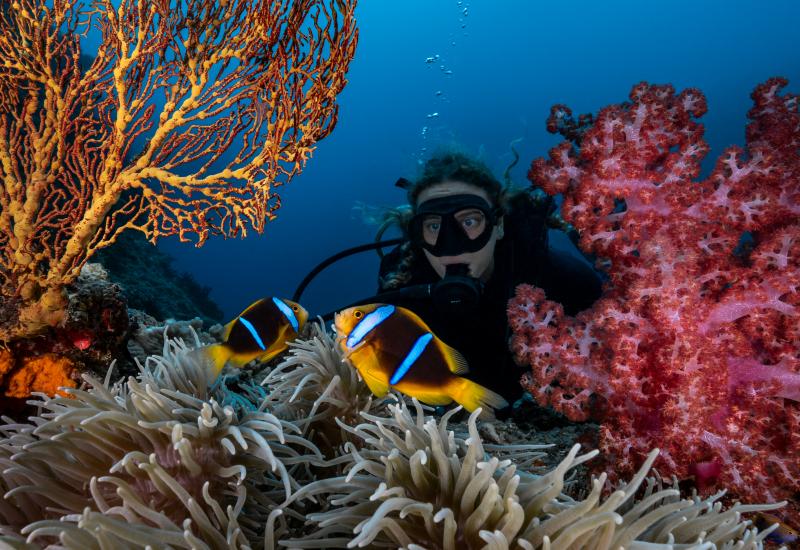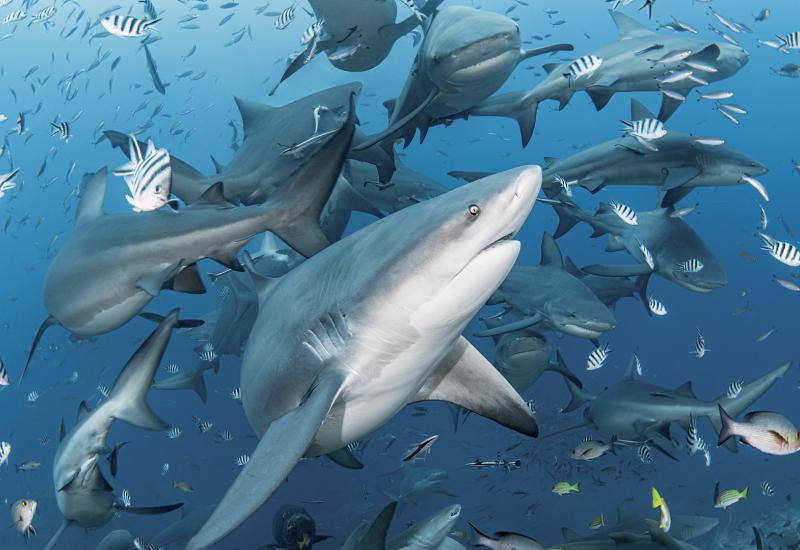We Are Family: Anemonefish Photo Gallery
Who doesn’t love Nemo? The star of a wonderfully animated film about an alternate universe under the sea, Nemo shot into instant stardom, and because of him, anemonefish have become instantly recognizable, even by non-divers.
So here’s the thing: anemonefish are part of a much larger family of fish called Damselfish. Damselfish of one kind or another can be seen in pretty much every tropical location (as well, the gorgeous, large, bright orange Garibaldis that can be seen off the coast of California, where the water is quite temperate), and they tend to be quite lively fish.
Anemonefish are a subfamily of damsels, and there are approximately two dozen varieties that can be seen in the Tropical Pacific, and about a dozen more that can be sighted in other warm oceans. As their name suggests, this family of Damselfish are found on sea anemones of one kind or another. There are several different varieties of host anemones, which, although they look like exotic plants, are animals themselves. Some anemones that host anemonefish have short tentacles, some are long and spaghetti-like, and still others have bubbles on the tips of their tendrils. They also can have a wide variety of colorations.
The anemones and the anemonefish share a symbiotic existence, which means that each of them benefit from the presence of the other. The fish coat themselves with the anemones’ toxic nematocysts — for some reason these fish and a few other creatures have evolved in a way that makes them immune to these stinging cells. So the anemonefish are protected from predators by these stinging cells, and in return, they apparently aerate the anemones with their constant motion, and possibly lure in small fish to be consumed by their hosts.
Anemonefish are sequential hermaphrodites — which is a fancy way of saying that they change sex as needed. All anemonefish are born male. In each community of fish on an anemone, only one dominant male and one dominant female engage in reproduction. When the female dies, one of the larger males will change sex and become female. So I guess Freud would have a field day with the relationship between Nemo and his dad. :)
From what I can tell, Nemo is a false clown anemonefish (Amphiprion ocellaris), although it is possible that the cartoonists at Disney modeled him after a clown anemonefish — which are slightly more dramatic in coloration (i.e. thicker black bars), but less common. Anemonefish also do not go on open ocean adventures like Nemo and his dad, but instead, apparently spend their lives on one anemone, or perhaps move to a neighboring anemone when overcrowding becomes an issue.
In this gallery, I am featuring ten different varieties of anemonefish, with some extra images that show some interesting behaviors of these little cuties. Anemonefish can be very frustrating to photograph — many varieties flit about constantly, while others burrow down into their host anemone as soon as a diver approaches, and won’t make an appearance for the duration. Getting a decent shot of these beautiful little fish requires some patience, and luck.
Looking for Mr. Little | Meeting Mr. Big | School Daze | Spook-tacular Eel Photos

Judy GThese beautiful but frenetic little fish (mature adults are about 3 inches long) are quite common in the Indo-Pacific. There are often a family of fish living on one anemone — a mature breeding pair, plus some juveniles and babies. I could spend an hour camped out on an anemone hosting these fish — the action is non-stop and the fish are just so darned cute.
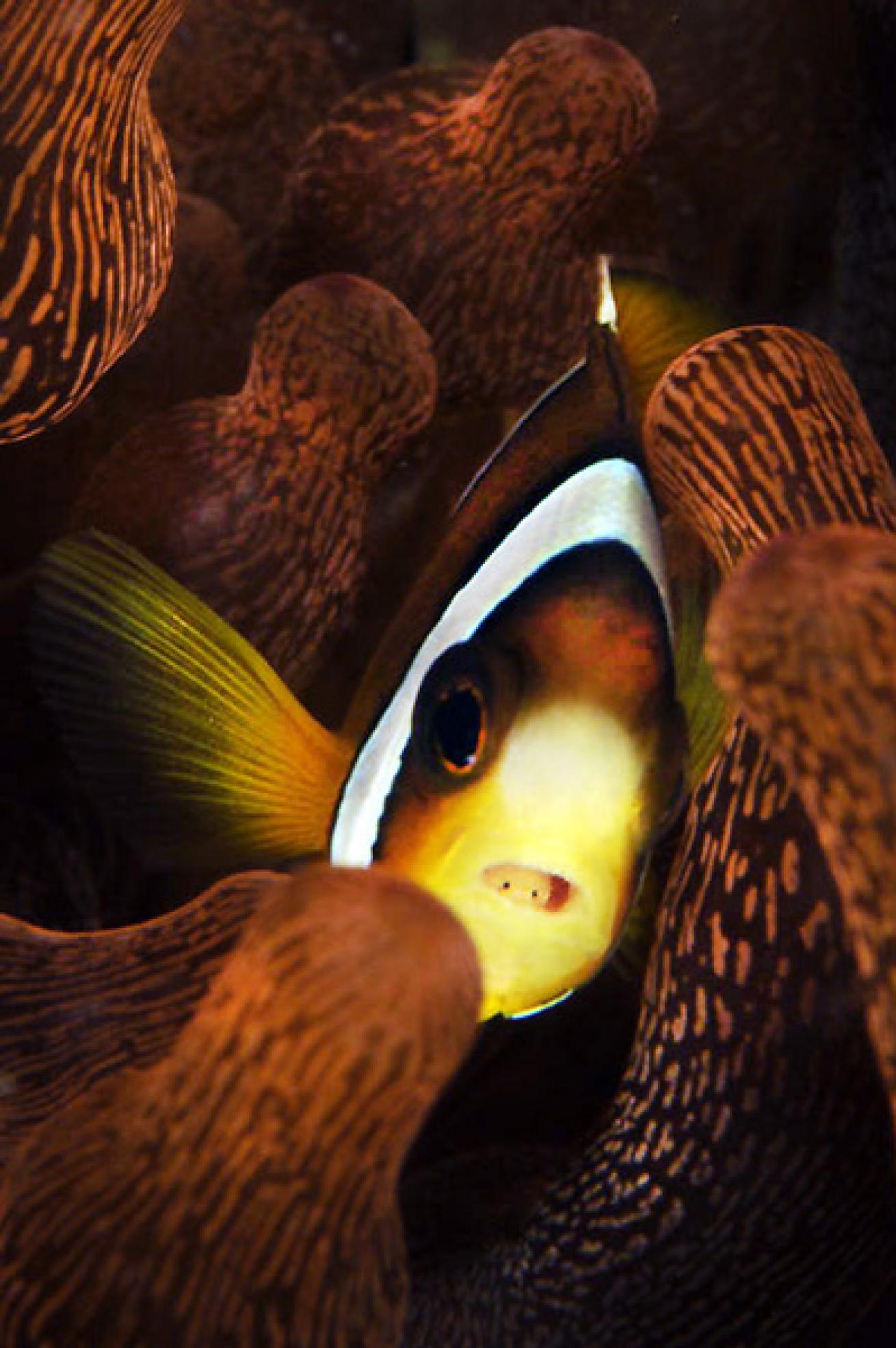
Judy GThis poor young anemonefish has a bug for a tongue. Cymothoa exigua, the tongue eating parasite, gains entry to the mouth of its host fish through its gills. It uses its appendages to grasp on to the tongue, and over time, it kills the tongue tissues. Amazingly, having this parasite does not kill the host fish — instead it manages to eat with a big bug in its mouth. Yuck! This is a juvenile — about 3 inches long.
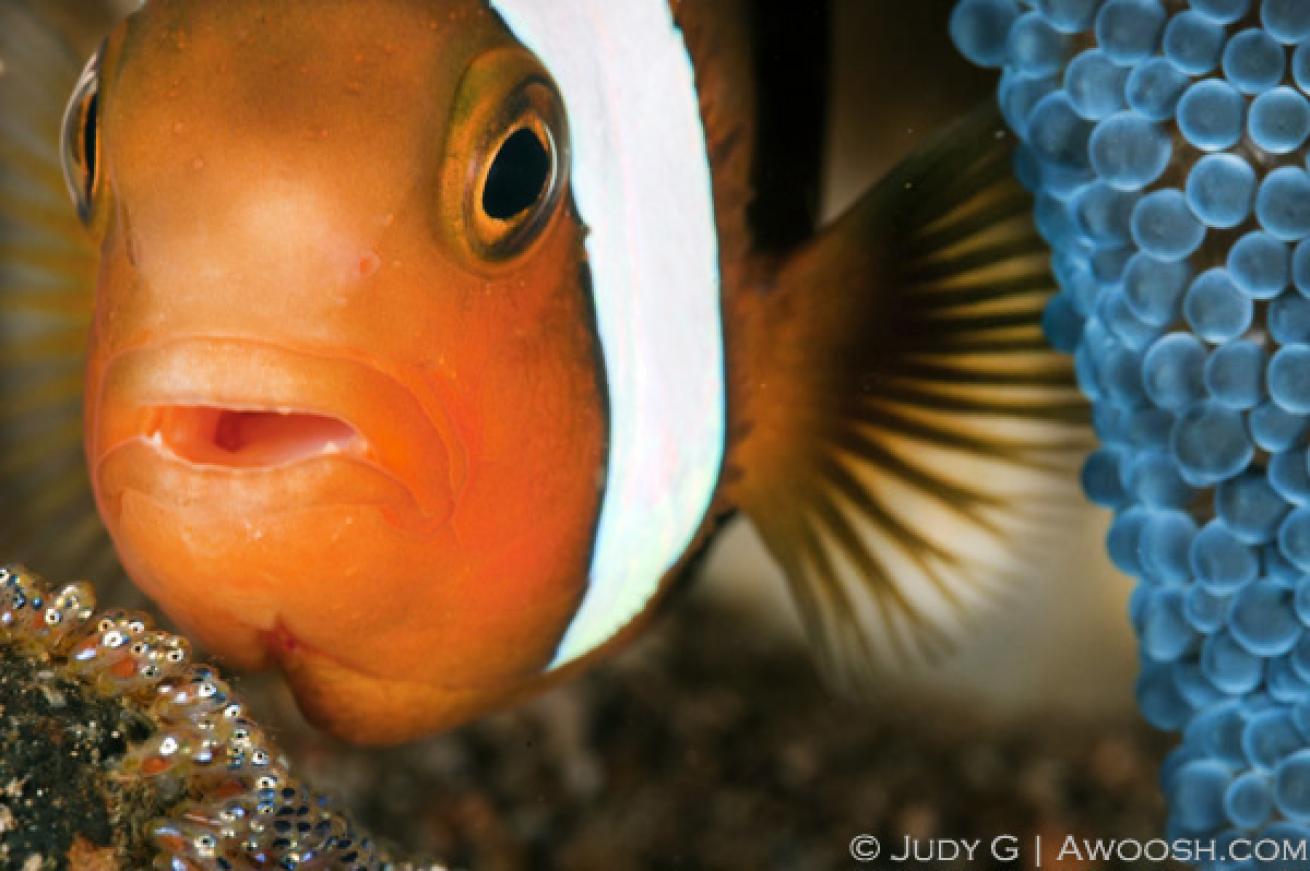
Judy GThis was an exciting find — an anemone populated with saddleback anemonefish and a small rock adjacent, covered with their jewel-like eggs. Saddlebacks are the largest of the anemonefish I’ve seen, with adults maxing out at about 6.5 inches in length. They come in a variety of colors (as you will see in another image) and can be quite belligerent, especially when nesting. These chunky anemonefish will swim out yards away from their nest to ward off intruders — that would be me :). They are capable of taking a small divot of flesh with their sharp teeth. This short-tendril anemone was quite small, but hosted a large family of fish, with more ready to hatch quite soon after this image was taken.
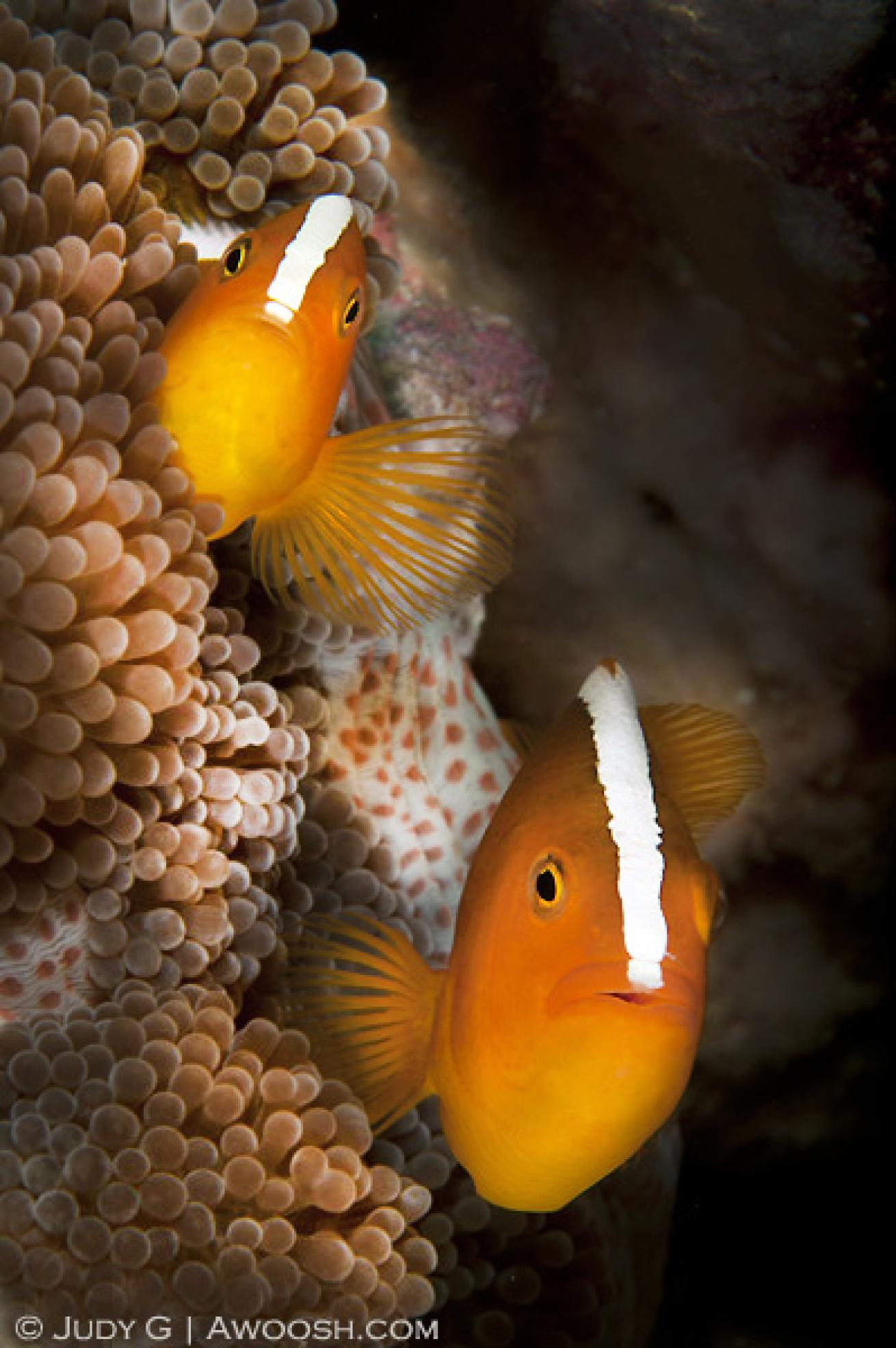
Judy GThese fish closely resemble Skunk Anemonefish, with the only noticeable difference being that the white stripe running down their face actually runs into the top lip, whereas on the Skunk, it stops just short. About 3 inches in length.
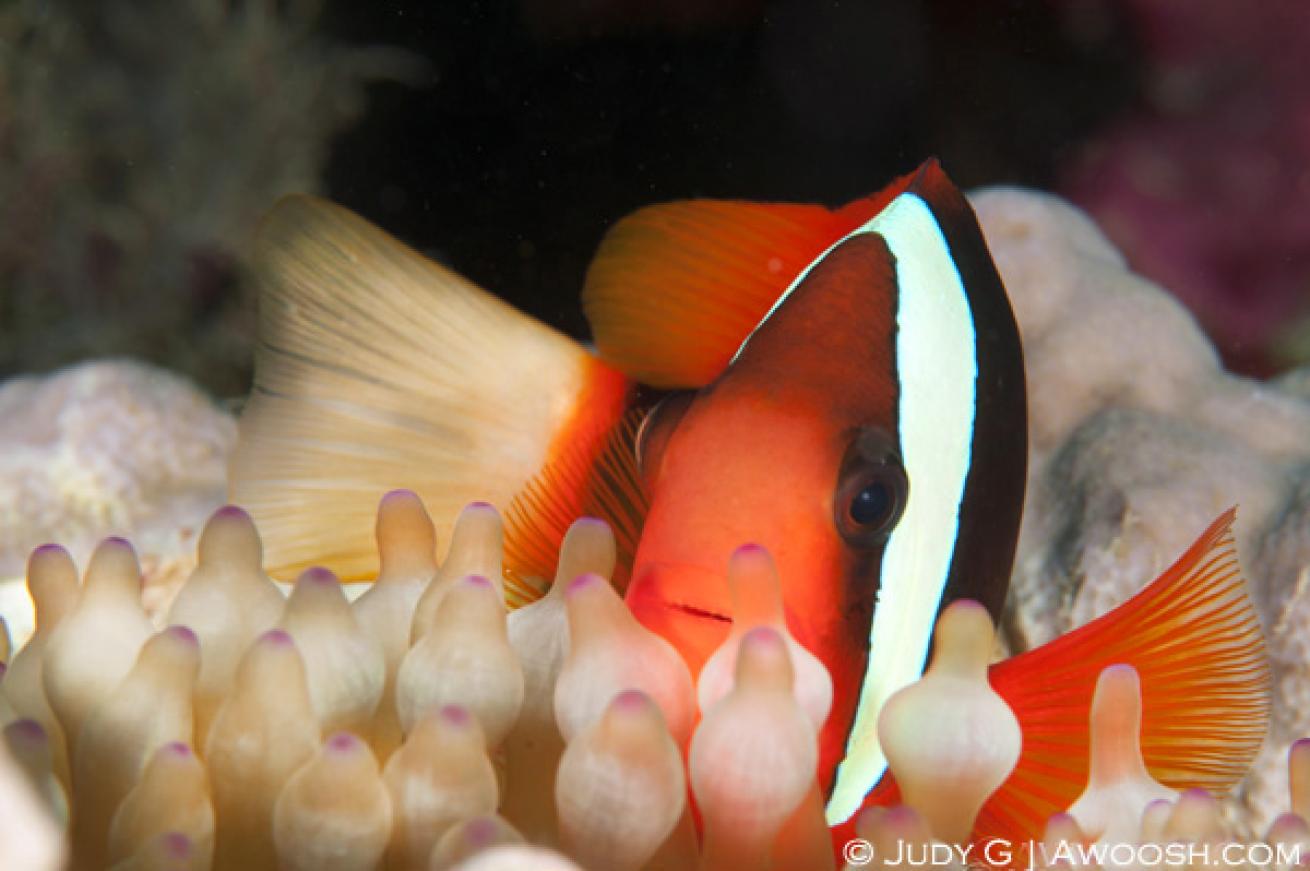
Judy GThis is a beautifully colored, relatively slow-moving anemonefish that is often found on bright red anemones. I was surprised to find this one living on a bubble anemone. This is a female, and grows to about 5 inches in length. The male is brighter orange and about half that size.

Judy G
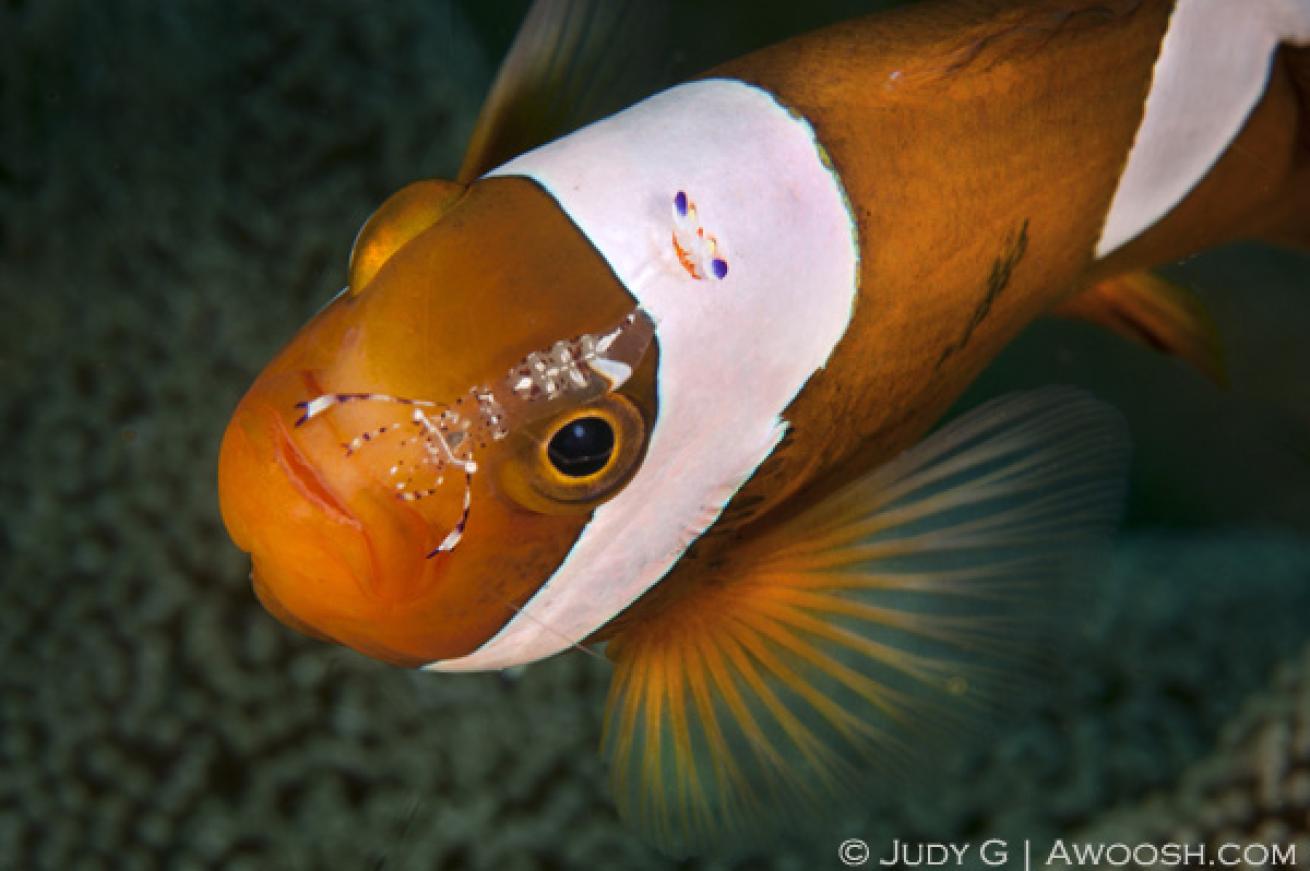
Judy GThis was another lucky find — no eggs with this colony, but a large cleaner shrimp living on the anemone jumped onto the fish while I was taking its picture. Cleaner shrimp are found on most anemones and their job is to pick small parasites off the fish, with which they feed themselves.
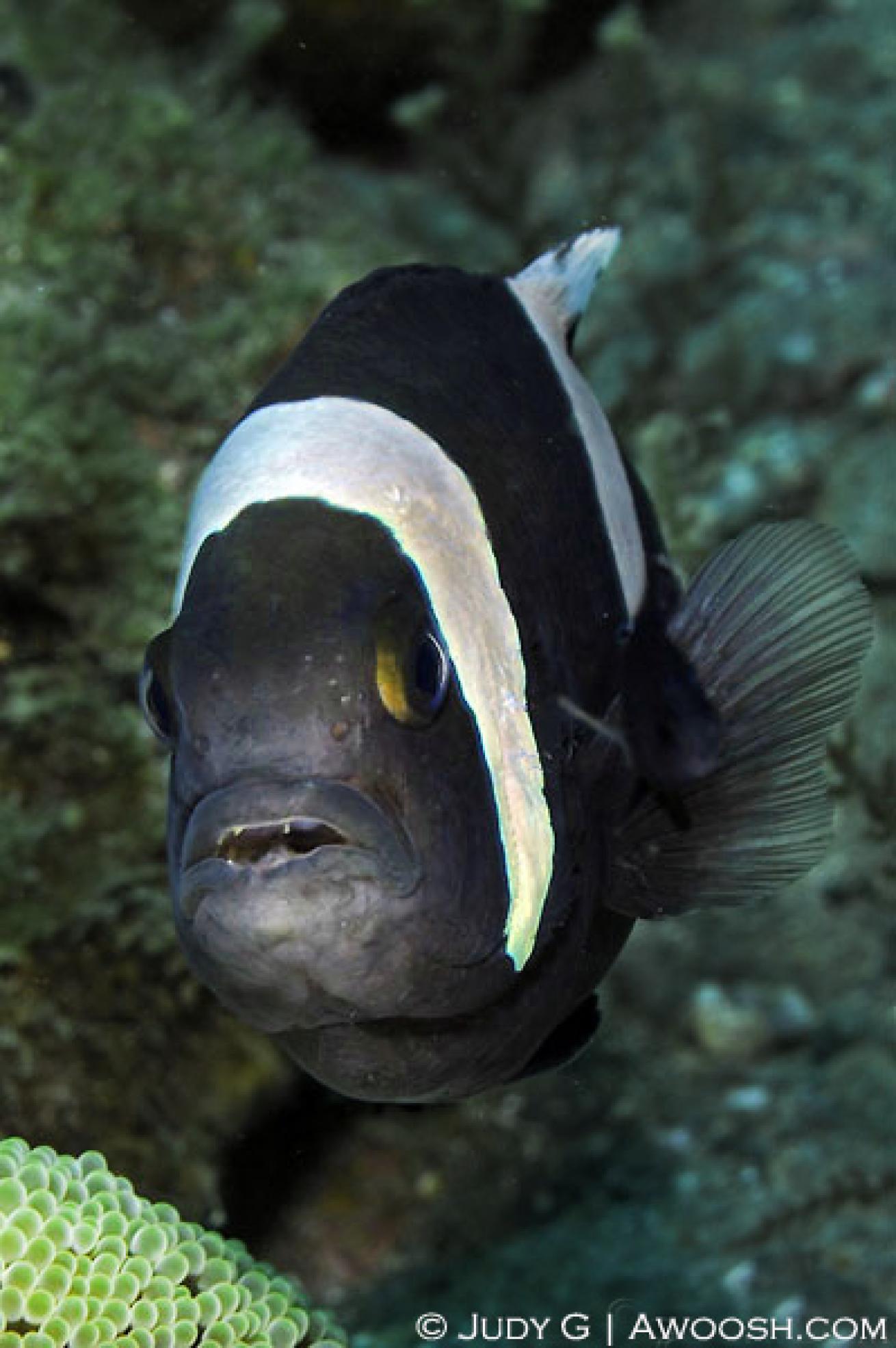
Judy GI included this image in this gallery to show the wild variation in color within the same species. This is the same type of fish as other Saddlebacks in this gallery, but whereas those ones were orange and white, this one was black and white, earning it the nickname "Panda Anemonefish."

Judy GOK I’ll admit it, I did not realize that Skunk and Pacific anemonefish were two different species until I cracked my fish identification book (Humann & DeLoach). They look pretty much identical, and are only differentiated (from a visible point of view) by the location where they were seen. These fish are about three inches in length. When the anemone is balled up like this, it means it is feeding. Anemones have their mouths in the middle of their tentacles.

Judy GThese beautiful little fish have a weird facial feature — look closely and you will see the little burr that grows out of each side of its face, giving it its name. This is a mature male, which is significantly smaller (and brighter red) than the female, which I will share in the next image. Remember that all anemonefish are sequential hermaphrodites (meaning that they change sex from male to female as required to create a mated pair) — this little guy, should he need to step up and be mom, will quickly double in size and take on quite a different appearance. About 3 inches in length.
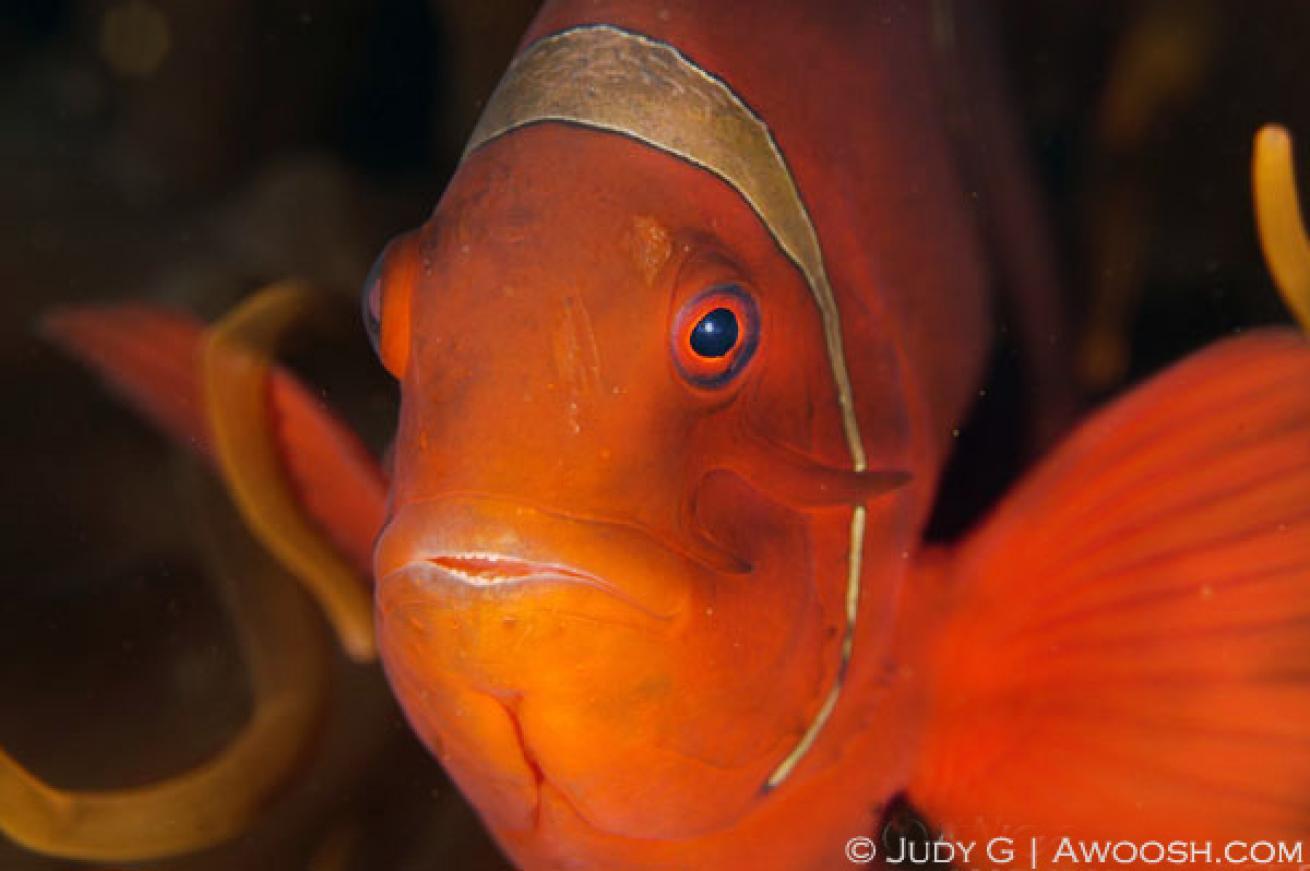
Judy GSo here is the female of the same species. She is noticeably larger and more dusky in color than the male, and the spines on her cheeks are quite a bit more pronounced. This fish and the one in the previous image were a mated pair living on a bubble-tipped anemone. She was about 5 inches long.
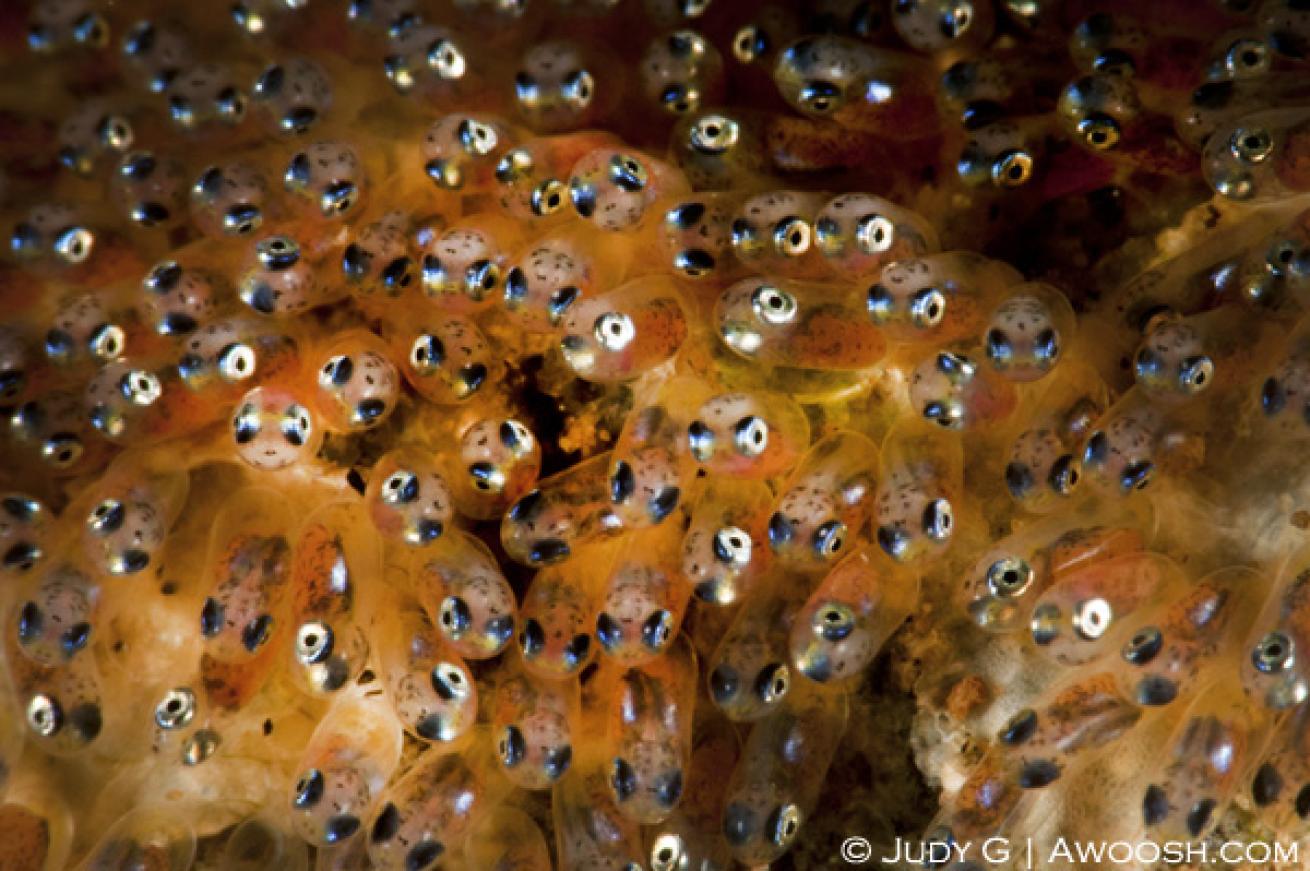
Judy GHere is a close up shot of the eggs that you could see in the second shot in this gallery. The eggs appear to be quite mature — look closely — the eyes and mouths are visible in some of them. They are quite tiny – each one about the size of an uncooked grain of tapioca.
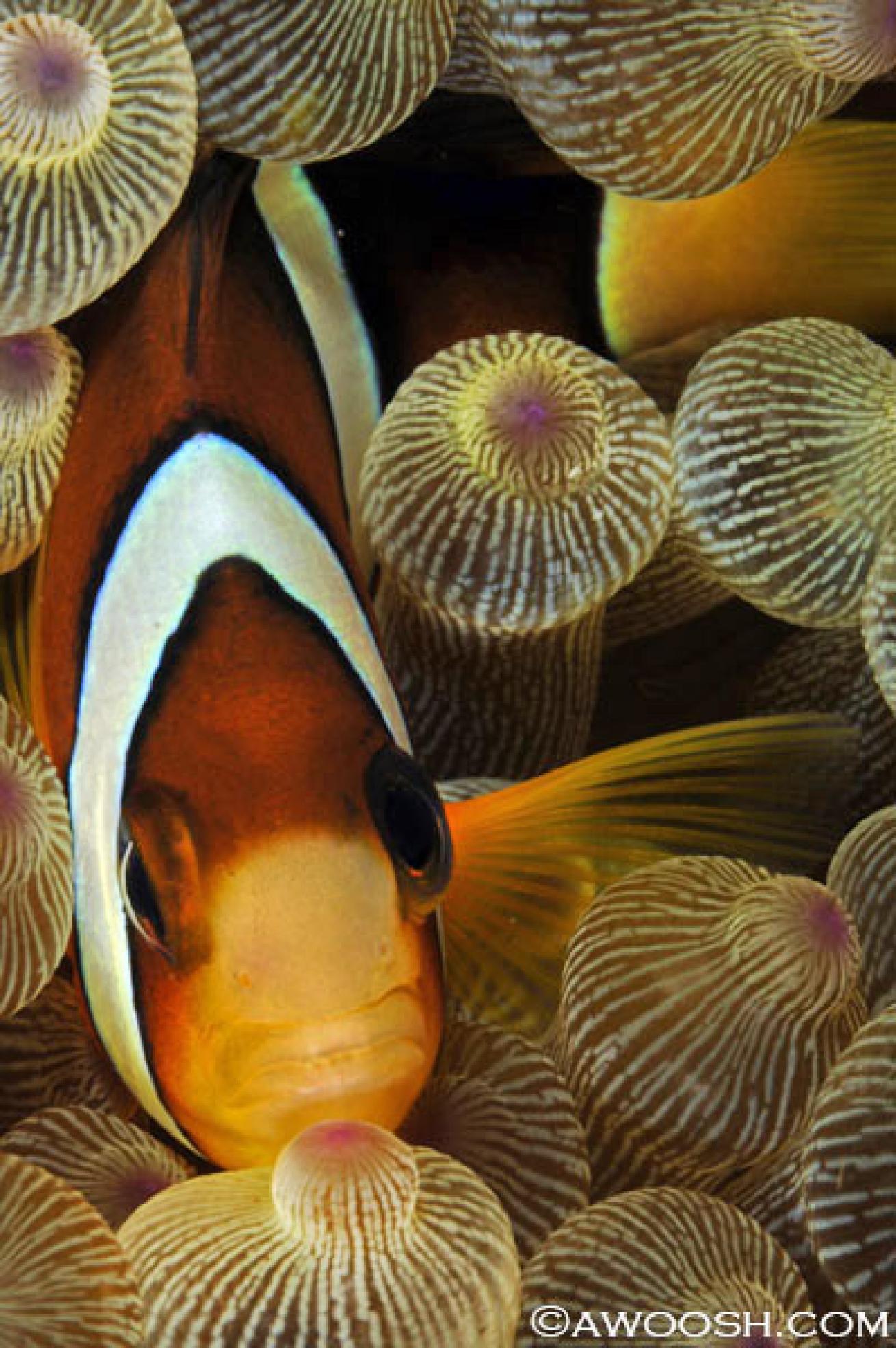
Judy GI include this image as a distinct species, and because I love this kind of bubble anemone!
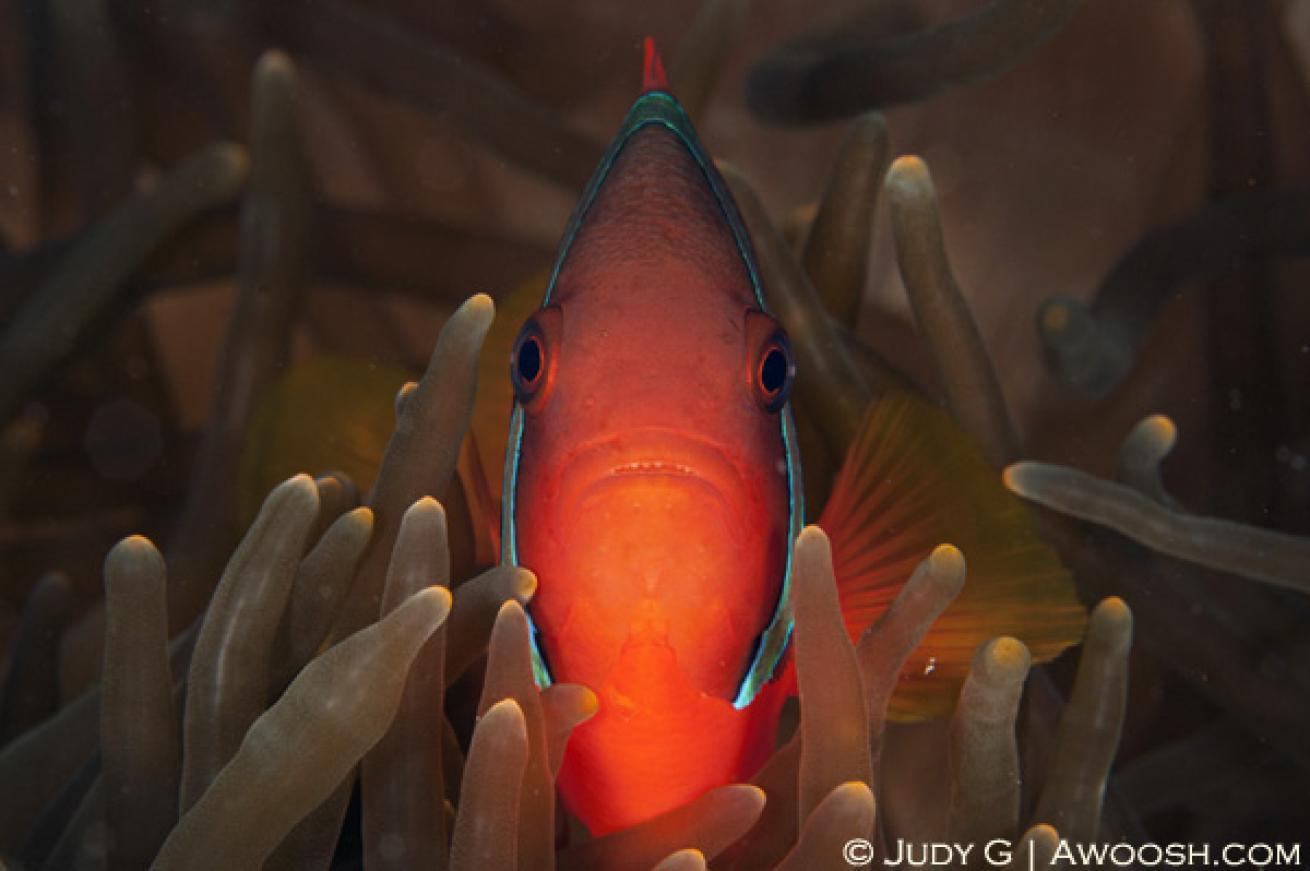
Judy GThis slower moving anemonefish is also quite shy, and tends to burrow into its host anemone. I had to wait quite a while to get this shot.
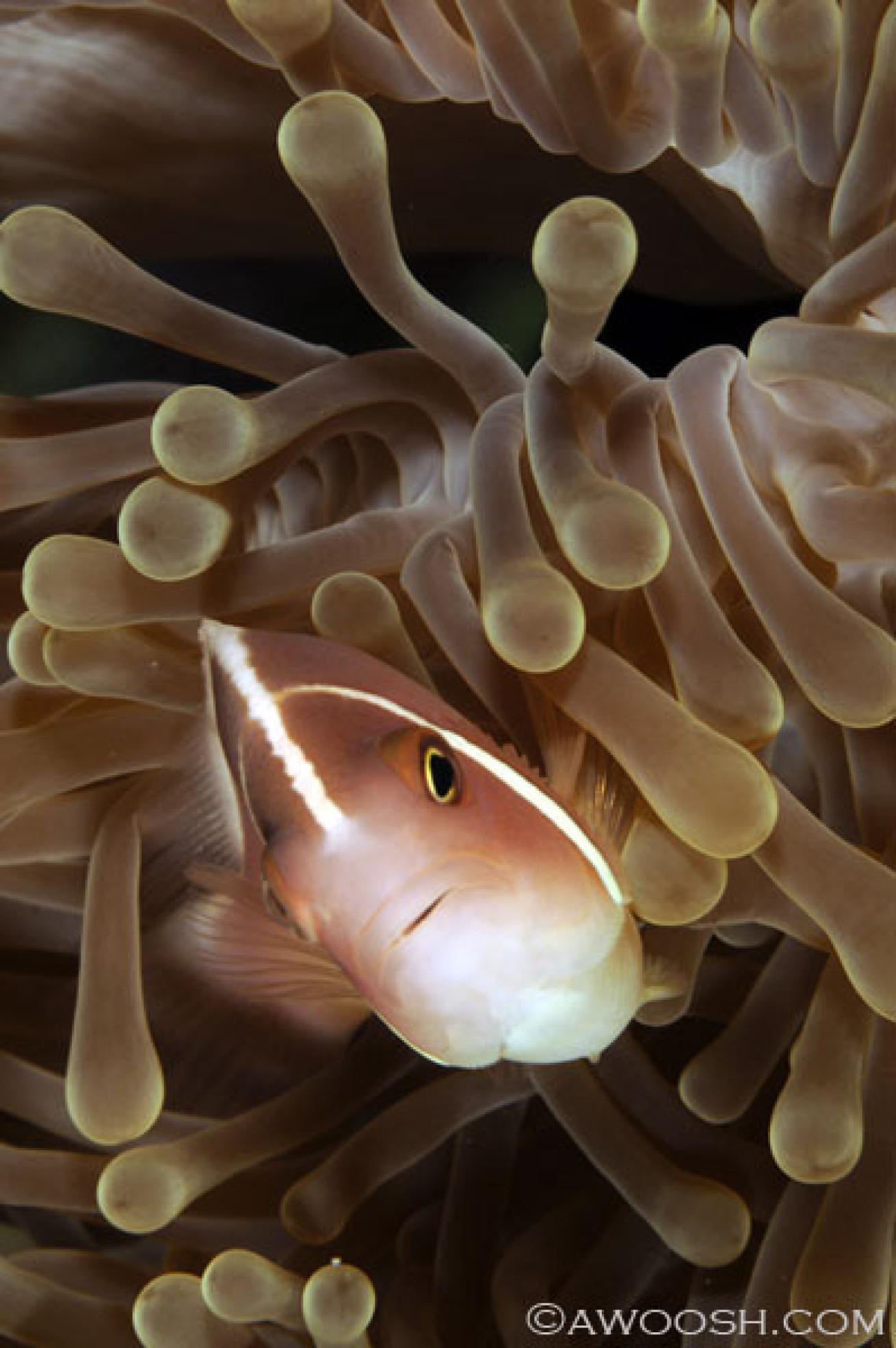
Judy G
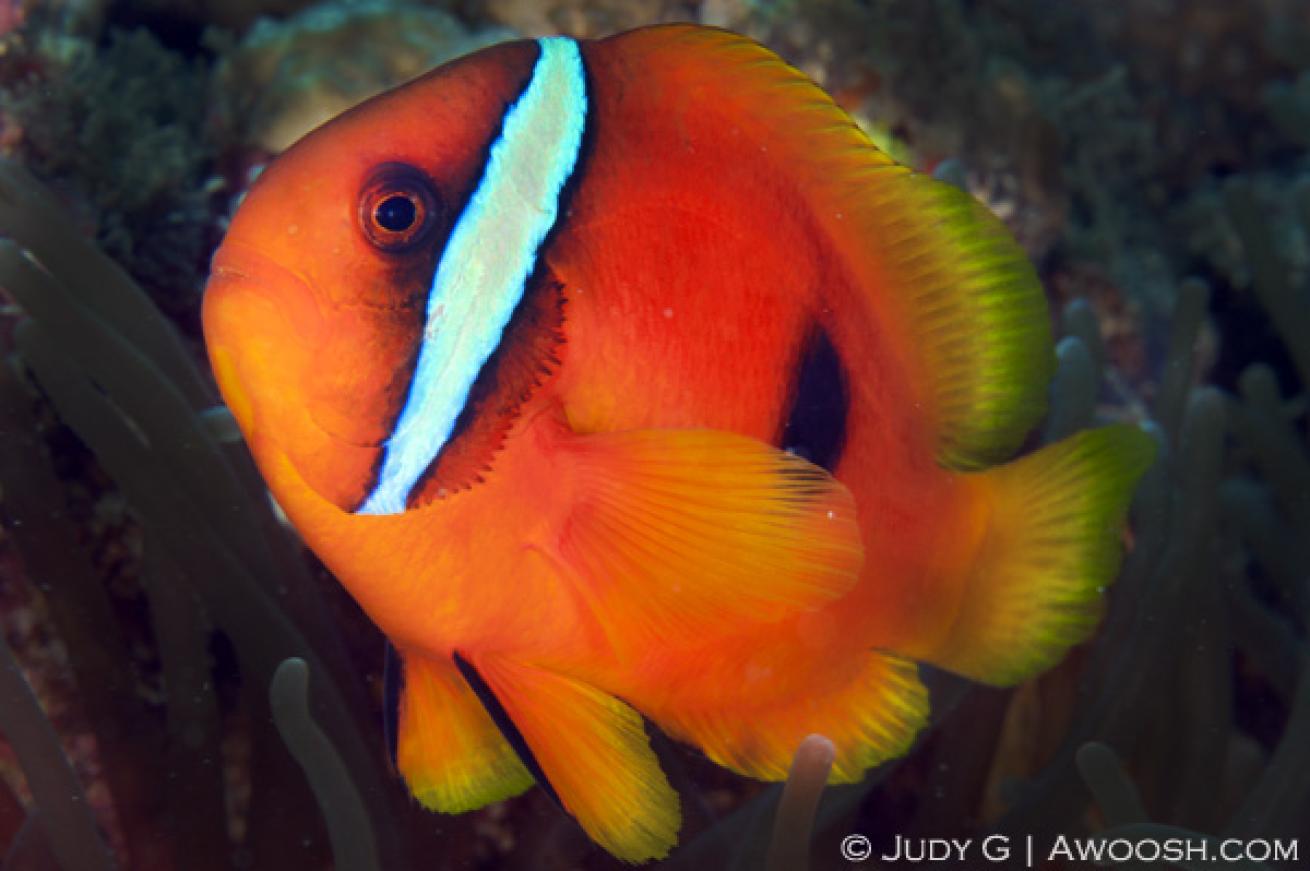
Judy GThis isn’t the most artistic shot, but it is useful in that it shows the entire profile of the fish, making it easier to identify. The black marking on this species can be quite small (as it is on this one) or it can cover up to a large portion of the flank. I haven’t seen a lot of these in my travels. This fish is about 5 inches in length.
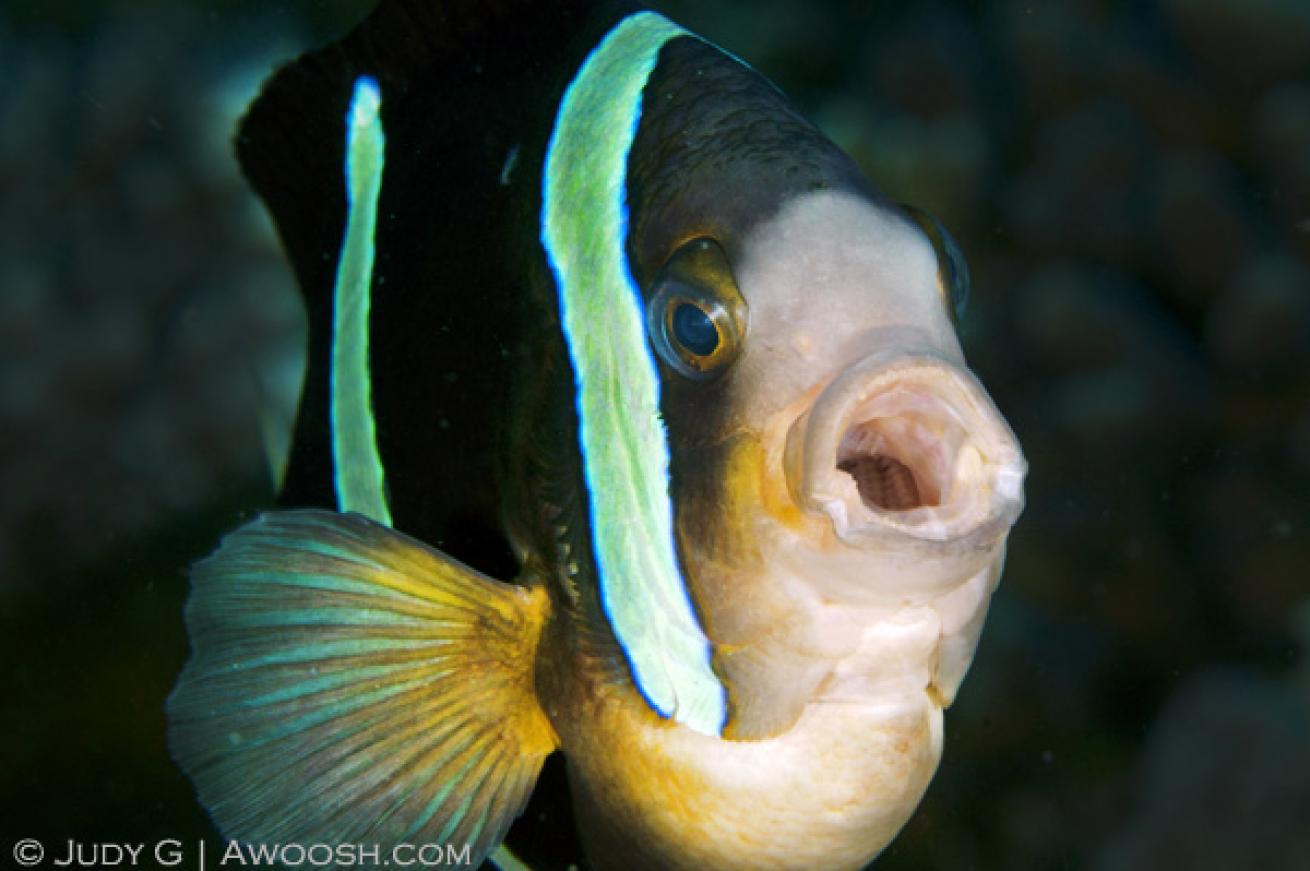
Judy GSome photographers try to look for magic moments when photographing stuff. Catching a yawn (I think most fish do this) is one of the challenges I sometimes set for myself. Most fish do seem to yawn from time to time — not quite sure why — may just be flexing jaw muscles, or possibly a signal of aggression. Unlike humans who often hold a yawn for a couple of seconds, in most fish it tends to be very quick. Again, patience and luck are required.
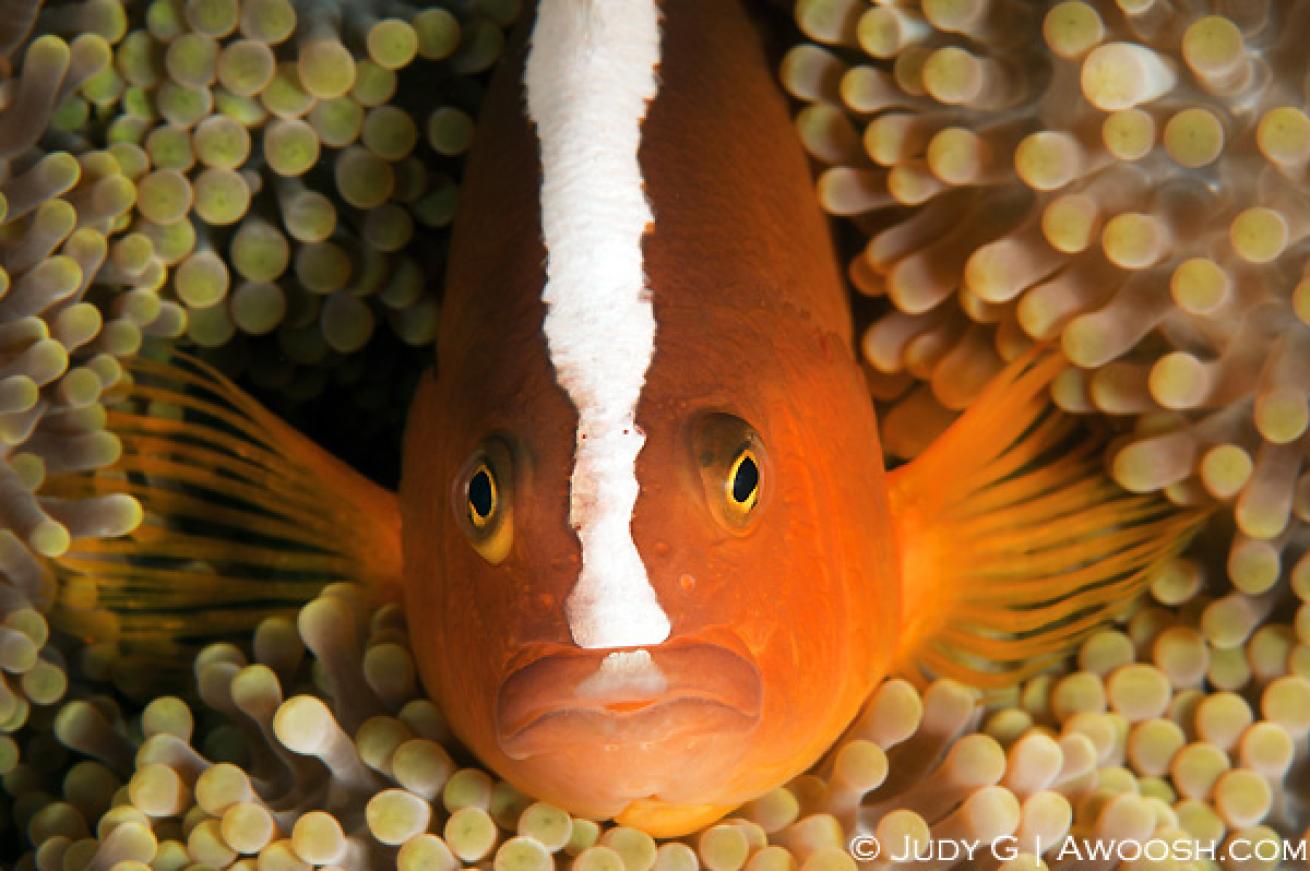
Judy GI already featured an Orange in this gallery, but I included this shot as well to show more detail of the markings on its face. Again, if the stripe ended before the top lip, it would be a Skunk, not an Orange. This guy looks a little grumpy with the paparazzi.

Judy GAs I’ve mentioned before, this variety of anemonefish really flit around constantly — they are never, ever still. So catching them all in a pleasing composition? Challenging, but rewarding.
Who doesn’t love Nemo? The star of a wonderfully animated film about an alternate universe under the sea, Nemo shot into instant stardom, and because of him, anemonefish have become instantly recognizable, even by non-divers.
So here’s the thing: anemonefish are part of a much larger family of fish called Damselfish. Damselfish of one kind or another can be seen in pretty much every tropical location (as well, the gorgeous, large, bright orange Garibaldis that can be seen off the coast of California, where the water is quite temperate), and they tend to be quite lively fish.
Anemonefish are a subfamily of damsels, and there are approximately two dozen varieties that can be seen in the Tropical Pacific, and about a dozen more that can be sighted in other warm oceans. As their name suggests, this family of Damselfish are found on sea anemones of one kind or another. There are several different varieties of host anemones, which, although they look like exotic plants, are animals themselves. Some anemones that host anemonefish have short tentacles, some are long and spaghetti-like, and still others have bubbles on the tips of their tendrils. They also can have a wide variety of colorations.
The anemones and the anemonefish share a symbiotic existence, which means that each of them benefit from the presence of the other. The fish coat themselves with the anemones’ toxic nematocysts — for some reason these fish and a few other creatures have evolved in a way that makes them immune to these stinging cells. So the anemonefish are protected from predators by these stinging cells, and in return, they apparently aerate the anemones with their constant motion, and possibly lure in small fish to be consumed by their hosts.
Anemonefish are sequential hermaphrodites — which is a fancy way of saying that they change sex as needed. All anemonefish are born male. In each community of fish on an anemone, only one dominant male and one dominant female engage in reproduction. When the female dies, one of the larger males will change sex and become female. So I guess Freud would have a field day with the relationship between Nemo and his dad. :)
From what I can tell, Nemo is a false clown anemonefish (Amphiprion ocellaris), although it is possible that the cartoonists at Disney modeled him after a clown anemonefish — which are slightly more dramatic in coloration (i.e. thicker black bars), but less common. Anemonefish also do not go on open ocean adventures like Nemo and his dad, but instead, apparently spend their lives on one anemone, or perhaps move to a neighboring anemone when overcrowding becomes an issue.
In this gallery, I am featuring ten different varieties of anemonefish, with some extra images that show some interesting behaviors of these little cuties. Anemonefish can be very frustrating to photograph — many varieties flit about constantly, while others burrow down into their host anemone as soon as a diver approaches, and won’t make an appearance for the duration. Getting a decent shot of these beautiful little fish requires some patience, and luck.
Looking for Mr. Little | Meeting Mr. Big | School Daze | Spook-tacular Eel Photos


